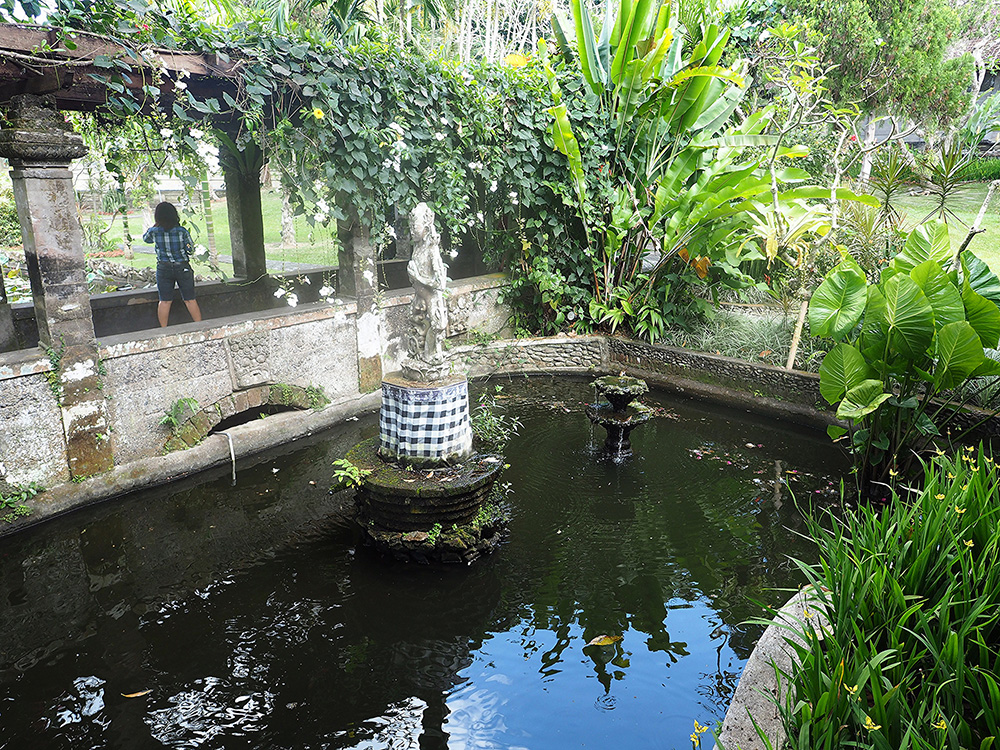Bali is a place where tranquility, harmony, and balance preside. While it’s known to some as the ultimate surfing destination, it’s also a haven for yoga retreats, meditative escapes, or simple relaxation amidst forests and rice fields. The underlying peace and calm of the island is no accident — tranquility is a way of life that the Balinese take very seriously, and it’s symbolized in the poleng, the trademark textile of Bali.
The saput poleng (saput means "blanket," and poleng means "two-toned") is a woven black-and-white checkered textile. It’s found just about everywhere on the island: wrapped around large tree trunks, draped over rocks, tucked in statues and shrines, or used in ceremonies as banners, umbrellas, or part of costumes.
Rwa Bhineda — the philosophy of balance
The Balinese believe in mutual dualism, which is the idea that two opposite things depend on each other to exist: you can’t have day without light, black without white, low without high, joy without sorrow, etc. This is the core tenet of Rwa Bhineda, a philosophy that’s embedded in everyday life in Bali.

Men in Bali wear the traditional saput poleng cloth. Photo courtesy of Sue.
Rwa Bhineda promotes tolerance and an appreciation of opposites and differences. In addition, Balinese children are taught not to suffer too long in despair, for there will always be joy to balance it (and also to be careful not to celebrate joy too excessively, for it will eventually be balanced by sadness). Differences must be embraced in order to create harmony and balance.
Black and white symbolizes Rwa Bhineda, and therefore this concept of balance is expressed perfectly in the poleng cloth, where there is an alternating and always equal number of black and white squares. Together, they signify the coexistence of opposites and the ultimate achievement of equilibrium.
There are two other types of saput poleng: one with grey in addition to black and white, which represents the transition between black and white; and another that includes red squares, which symbolize energy and passion.
Why is that statue wearing a sarong?
When you see a poleng cloth draped over a statue, shrine, tree, or other item, it means it has been marked to show that a spirit resides within. Because the poleng cloth is a guardian symbol, a sarong-wearing statue signifies that the cloth is guarding the energy within, keeping the black-and-white sanctity of that statue intact.

A statue is seen draped in a length of saput poleng. Photo courtesy of Farley Roland E.
And because the poleng cloth symbolizes the concept of balance and harmony that infuses the traditional Balinese way of life, it is regarded with a great deal of respect. When locals see an item wrapped or draped in it, they will honour it in some way. This can be by saying a quick prayer when passing, honking their motorbike horn, or dimming their headlights.
The saput poleng can be found on just about every corner of the island. As a visitor, when seeing the cloth, you’re encouraged to pay your own respects to the textile, and reminded to recognize and accept the differences that exist in the universe.
Getting there
From moments of meditation to beachside celebrations and terrific local food, Bali's got it all. G Adventures offers a number of trips to the region, whether you're looking to squeeze in a hike, a visit to a Hindu temple, or just some R&R. Check out our trips to Bali here.























